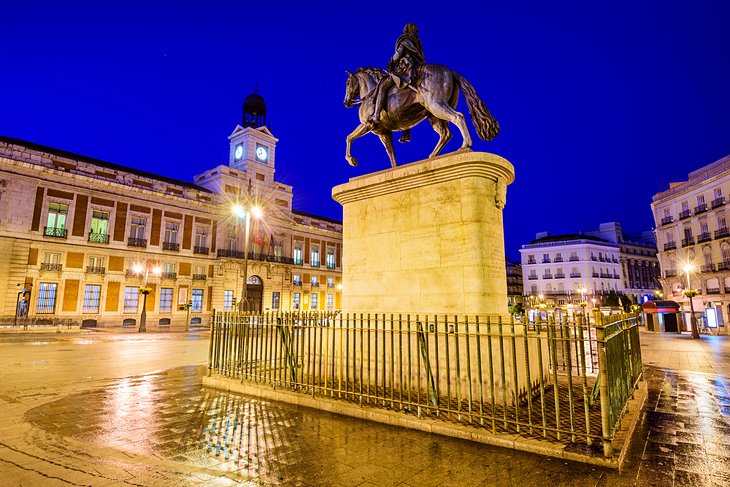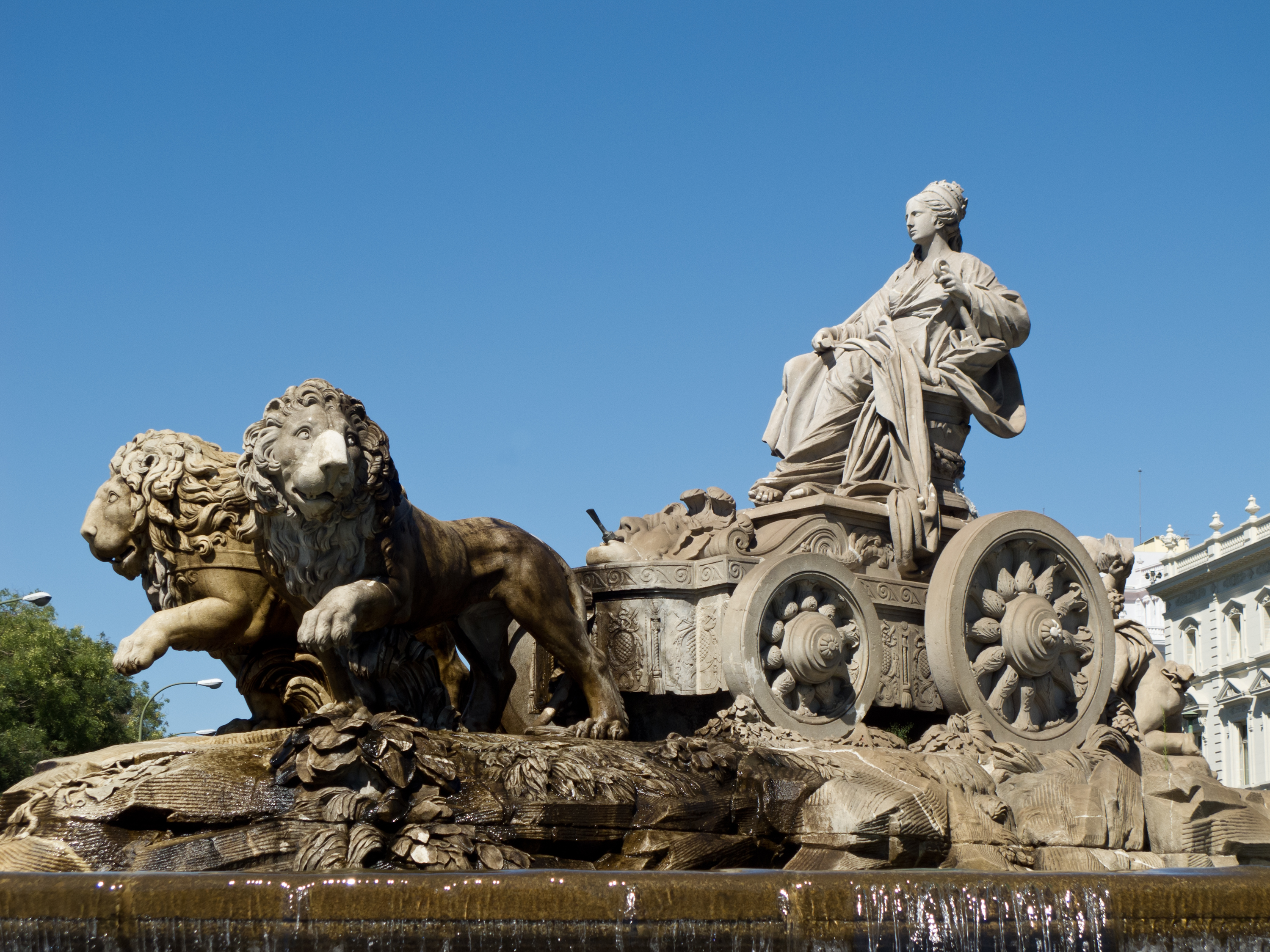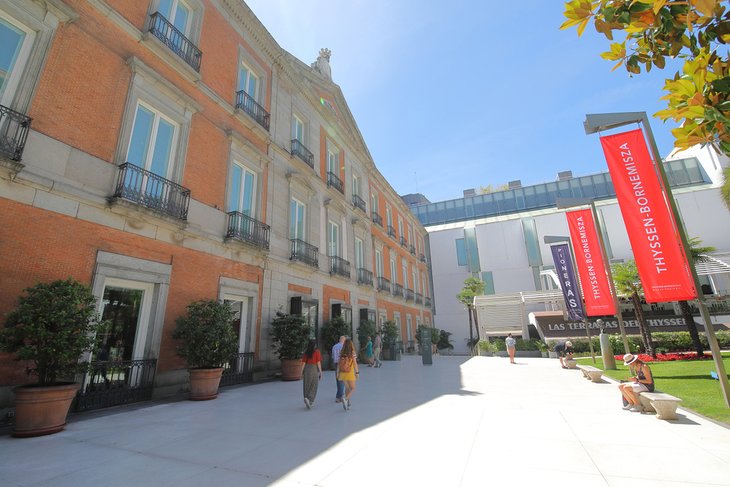As Spain’s capital and largest city, Madrid is steeped in cultural and artistic heritage, offering a vast array of things to do and sights to see. It can be difficult to know where to start in such a vibrant city, but here’s a list of the top 10 attractions you just can’t miss when paying a visit to the Spanish capital.
1. Museo Reina Sofia

The Museo Nacional Centro de Arte Reina Sofía was designed as a modern complement to the historical Prado Museum. It was officially inaugurated by Queen Sofia in 1992. Originally built as a hospital, the museum was expanded in 2005 with a structure designed by French architect Jean Nouvel. The Museo Reina Sofia is home to a broad array of works created by Spanish artists, including extensive collections of artwork by Pablo Picasso and Salvador Dalí. Picasso’s masterpiece, El Guernica, which conveys the horrors of the Spanish civil war, is alone worth the price of admission.
2. Plaza Mayor

The most famous of Madrid’s many stately plazas, the Plaza Mayor dates back to 1619, when it lay outside the city’s bounds and was used to host bullfights. During the Spanish Inquisition, many accused heretics met their death there. Three sides of the rectangular cobblestone plaza are bordered by block-long rows of three-story apartments completed in the late 18th century. The structures are decorated with frescoes, ornamented with balconies framed with wrought-iron railings and topped with elegant slate spires. A statue of Philip III on horseback stands in the middle of the plaza. Facing the plaza is the Casa de la Panadería, which houses a tourist information center.
3. Retiro Park

Known as the Parque del Buen Retiro or El Retiro, the park is a 350-acre spread of gardens, fountains and buildings located at the edge of the city center. Retiro Park began as a monastery in the 1500s. It was expanded into a royal park when Phillip II moved his court to Madrid in 1561. It’s been part of the public domain since 1868. A favorite spot for tourists and locals alike, the park features a large artificial pond where people can rents kayaks and canoes. An arcing colonnade structure on the east shore is the Monument to Alfonso XII. The Paseo de la Argentina, known as the Statue Walk, is ornamented with statues from the Royal Palace depicting Spanish kings through the ages.
4. Prado Museum
 flickr/losmininos
flickr/losmininosThe Museo del Prado is one of the most popular tourist attractions in Madrid. The 18th century structure designed by architect Juan de Villanueva houses one of the world’s finest art collections. A 2007 expansion has made the famed museum easier to navigate. With more than 7,000 works of art representing culture and history from the 12th century to the early 19th century, however, it’s impossible to see everything in a single visit. Visitors may wish to focus on the museum’s collection of Spanish artists, including Goya, El Greco, da Ribera and Velázquez, which is inarguably the best collection of Spanish paintings in the world.
5.Puerta del Sol: The Heart of the City

The Puerta del Sol was named after the sun emblem on the old city gate, which formerly stood here. This spacious town square aligns with the rising sun. Besides being a hub of public transportation (with several bus stops and Metro entrances), the Puerta del Sol is also the “Kilometer Zero”point from which all distances on the Spanish national road network are measured.
The Puerta del Sol has been the scene of many historic events, including the Spanish resistance to Napoleon on May 2nd 1808, and in 1931, the Second Republic was proclaimed here. Nowadays the square is a place to hang out and enjoy life. Lined with shops and cafés, the Puerta del Sol is still one of the liveliest squares in Madrid. Just off the Puerta del Sol is Madrid’s largest department store, El Corte Inglés, which sells everything from clothes, shoes, and swimsuits to traditional Spanish fans. Also nearby is La Violeta, an old-fashioned confection shop that offers the Madrid specialty of violet candies.
6. Palacio de Cristal

This 1880s glass and wrought-iron construction, which dates from 1887 and was constructed for the Philipine Islands Exhibition, is an outpost of the Reina Sofía museum and a lovely, luminous space for viewing art. It occupies a stunning setting in the middle of the Retiro park, next to a lake with ducks, surrounded by nature and people relaxing and having fun. Shows here often involve large-scale installations, sculpture or pieces conceived specifically for the space.
7. Zoo-Aquarium de la Casa de Campo

This attractively landscaped zoo is located slap bang in the heart of the Casa de Campo. The animals look as happy as can be expected of beasts held in captivity, although the big cats could really do with a bit more leg-room, but it’s certainly a good option for a day out with the kids. Among the more than 6,000 animals of 500 different species, the most popular are the panda bear and the gorillas. At the Tierra de Gorilas (‘Land of Gorillas’) a sheet of reassuringly thick glass separates you from the massive, glowering silverbacks that prowl about. Children will enjoy walking through the shark tank and dolphinarium. There is also a petting zoo and a train ride.
8. Plaza de Cibeles

One of the most beautiful plazas in Madrid the Plaza de Cibeles is surrounded by several buildings constructed in the Neo-Classical style, including the stunning Palacio de Cibeles, formerly known as the Palacio de Comunicaciones, which was designed by architect Antonio Palacios. At the center of the plaza is a statue that is also considered a symbol of the city: the Fuente de la Cibeles. The magnificent fountain depicts the Roman goddess Cybele on a chariot drawn by lions. Sculpted in purple-colored marble by Francisco Gutiérrez and Roberto Michel in 1780, the fountain once served as a source of domestic water for nearby houses.
9. Fuente de Cibeles and Gran Via

The famous Cybele’s fountain (Fuente de Cibeles) stands in a major traffic intersection and is one of the most emblematic monuments in Madrid. Created in 1782 by Francisco Gutiérrez and Roberto Michel, the impressive traffic-stopping fountain depicts the Roman Goddess Cybele riding a lion-drawn chariot. Behind the fountain is the Palacio de Cibeles cultural center, which hosts art exhibitions and workshops, conferences and concerts. The Centro Palacio de Cibeles has two restaurants: the Colección Cibeles caféteria and the Cibeles Palace restaurant.
Nearby (via Calle de Alcala) is one of Madrid’s most popular shopping streets, the Gran Vía. Tourists will find many restaurants, hotels, and theaters on this bustling street. Just off the Gran Vía on Calle de Jovellanos, the famous Teatro de la Zarzuelaoffers renowned performances of zarzuela – a unique type of satirical opera with songs accompanied by classical Spanish guitar music.
Read Also: 10 Things to do and see in Bangkok
10. Museo Thyssen-Bornemisza: Fine Arts Museum

The Thyssen-Bornemisza Museum presents an overview of European art from the 13th century to the late 20th century. With nearly 1,000 art works on display, the collection covers the Renaissance, the Baroque period, Rococo, Romanticism, Impressionism, Fauvism, Expressionism, modern art and Pop Art. The museum also has an excellent collection of 19th-century American paintings. This high-caliber collection includes renowned masterpieces such as Christ and the Samaritan Womanby Duccio di Buoninsegna, Venus and Cupid by Rubens, The Annunciation by El Greco, Young Knight by Vittore Carpaccio, Jesus among the Doctors by Albrecht Durer, Charing Cross Bridge by Monet, Dancer in Green by Edward Degas, and Les Vessenots by Vincent van Gogh.
